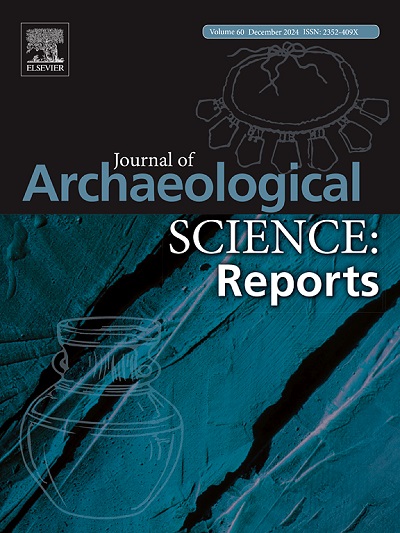Demographic history of early centralized societies: A biodistance study on prehistoric Anatolia
IF 1.5
2区 历史学
0 ARCHAEOLOGY
引用次数: 0
Abstract
The emergence of urbanization and centralized authority in the Early Bronze Age marks the most significant transformation in Southwest Asia since the Neolithic transition. Political centralization and social stratification, which originated in Southern Mesopotamia, spread to surrounding regions through long-distance interactions, especially trading relations. Anatolia experienced these shifts dynamically during both the Neolithic and Early Bronze Age. While the archaeological aspects of these changes have long been well-documented, their biological impact through ancient DNA analysis has gained more interest in recent years. This study investigates whether patterns of increased genetic diversity and homogenization observed in archaeogenomic data are consistent with biodistance analyses based on dental morphological data, and assesses the impact of lifestyle changes during the Late Chalcolithic-Early Bronze Age on biocultural interactions in Anatolia and its surroundings. Biodistance analysis was conducted on human skeletal remains from six archaeological sites in Anatolia, spanning the Neolithic to the Early Bronze Age, using crown and cervical mesiodistal and buccolingual measurements alongside 36 dental nonmetric traits defined in ASUDAS. Heterogeneity and evenness analyses, Mean Measure of Divergence, Gower’s Coefficient, and Mahalanobis Distances for Multivariate Mixed Data analyses were applied to dental morphological data. The results reveal increased genetic diversity and phenotypic similarity following the Neolithic to the Early Bronze Age. These findings align with patterns seen in archaeogenomic studies which indicate gene flow occurred before cultural diffusion associated with urbanization.
早期中央集权社会的人口历史:史前安纳托利亚的生物距离研究
青铜器时代早期城市化和中央集权的出现,标志着西南亚自新石器时代以来最重大的转变。起源于美索不达米亚南部的政治集权和社会分层,通过长距离的互动,特别是贸易关系,传播到周边地区。安纳托利亚在新石器时代和早期青铜时代都经历了这些动态的变化。虽然这些变化的考古方面早已被充分记录,但近年来,通过古代DNA分析,它们的生物学影响获得了更多的兴趣。本研究调查了在考古基因组数据中观察到的遗传多样性和均质化的增加模式是否与基于牙齿形态数据的生物距离分析相一致,并评估了铜石器时代晚期-青铜时代早期生活方式的变化对安纳托利亚及其周围地区生物文化相互作用的影响。对安纳托利亚6个考古遗址的人类骨骼遗骸进行了生物距离分析,时间跨度从新石器时代到青铜时代早期,使用了冠和颈椎中远端和颊舌测量以及ASUDAS中定义的36个牙齿非度量特征。异质性和均匀性分析、平均散度测量、高尔系数和多元混合数据分析的马氏距离应用于牙齿形态学数据。结果显示,从新石器时代到早期青铜时代,遗传多样性和表型相似性有所增加。这些发现与考古基因组学研究中发现的模式一致,表明基因流动发生在与城市化相关的文化传播之前。
本文章由计算机程序翻译,如有差异,请以英文原文为准。
求助全文
约1分钟内获得全文
求助全文
来源期刊

Journal of Archaeological Science-Reports
ARCHAEOLOGY-
CiteScore
3.10
自引率
12.50%
发文量
405
期刊介绍:
Journal of Archaeological Science: Reports is aimed at archaeologists and scientists engaged with the application of scientific techniques and methodologies to all areas of archaeology. The journal focuses on the results of the application of scientific methods to archaeological problems and debates. It will provide a forum for reviews and scientific debate of issues in scientific archaeology and their impact in the wider subject. Journal of Archaeological Science: Reports will publish papers of excellent archaeological science, with regional or wider interest. This will include case studies, reviews and short papers where an established scientific technique sheds light on archaeological questions and debates.
 求助内容:
求助内容: 应助结果提醒方式:
应助结果提醒方式:


